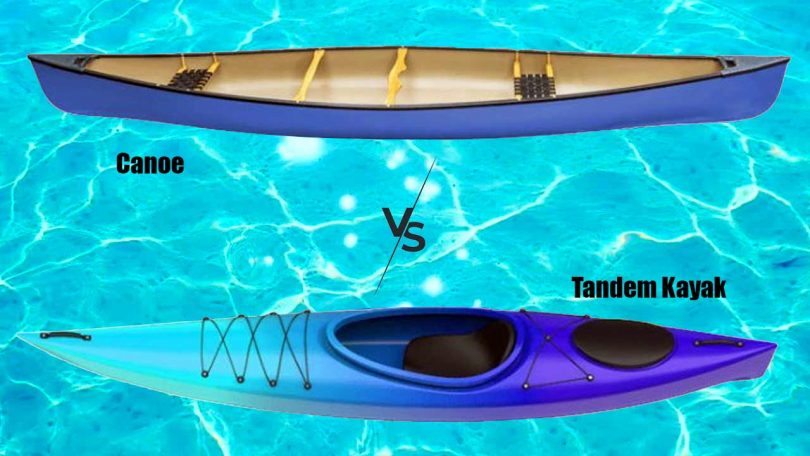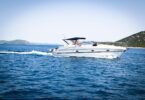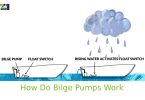If you put a bunch of boat enthusiasts together, the entertaining argument is going to be endless about the differences between a tandem kayak and a canoe. There has been a friendly rivalry between these two water vehicles over the years. But if you’ve developed an interest in boating and confused on what to pursue: tandem kayak or canoe, You will have to understand the basic differences between them.
Initially, the most important consideration before buying a top-class tandem kayak is if it’s ready to accommodate and take two persons, but for a canoe, you need to look into some other aspects with care.
Table of Contents
Tandem Kayak vs Canoe: Key Differences
They may look just like boats, but there is a lot to know about them. Similar in looks but different in experience, following differences between tandem Kayak and Canoe will help you narrow down your choice.
1. Closed vs Open Design
Canoes are open with wider and broader frames, designed for multiple players.
Kayaks are closed and come with a cockpit for paddlers. They are small and sleek in design and mostly used for recreational purpose.
2. Seating
Bluetooth open design getting into a Canoe is very easy and more comfortable. On the other hand, getting inside a Kayak can be very tricky, as it is closed. The paddler has to slide their way in and maintain balance so that the boat doesn’t tip off.
3. Paddling Method
When it comes to paddling, the kayaks win as they are designed for single users, having blades on both the ends. The Canoe being bulkier are difficult to paddle. They have a single blade, a knob or a T covering the other end.
4. Level of Wetness
This really depends upon the place the boating is done. Generally, a Canoe will keep you dry as they are above the water. But if you take a kayak in the open water or high waves, you might save yourself from getting wet due to its closed design.
5. Maneuverability and stability
In terms of stability, canoes are more stable, but when it comes to maneuverability, the kayaks win. The tandem Kayak, owing to their size, is easy to move around.
6. Usage
The canoes and kayaks both have their advantages and disadvantages in terms of usability. If you are planning a multiple day trips with many friends, Canoe will be a better option in terms of space.
Tandem kayaks are suitable for the adventurous types who want to explore the waters with friends. Transporting them is easy as they come in inflatable types also.
7. Storage Space
Canoes have wider space, making it easy to carry the gears. While the tandem kayaks come with storage space below the deck, present in the waterproof cargo hold.
Types and Variations
Tandem Kayak and canoes both come in different types, depending upon the purpose, design, and style. Let’s take a look at different types or variations of both, canoes and tandem kayaks.
Types of Tandem Kayaks
There are many tandem Kayaks type, depending on the purpose of use. They are:
Recreational Tandem
Suitable for paddling over calm waters, they are 9 to 12 feet in length.
Whitewater Kayaks
They are wider and shorter compared to the recreational fire they are more buoyant in whitewater, starting from 5.5 feet playboats to 8-9 feet river runners.
Touring and Sea Kayak
They are around 12 to 18 feet long. They are designed to paddle faster and longer than the recreational kayaks. They have the storage place at the front.
Sit-on-top Kayaks
The sit-on-top kayaks, which are used in a warmer climate, do not have a cockpit. The paddler sits on a molded top. They are good for fishing and diving in from.
Inflatable Kayaks
They look more like canoes and are easy in transporting, although they have a shorter life than other kayaks. They are similar in function to sit-on-top kayaks.
Racing Kayaks
The Racing kayaks are slender, long and light, used for racing. Their length ranges from 17-36 feet, sitting very low in the water.
Types of Canoes
As you’re ready to buy a canoe, know about the type of canoes used by paddlers for various purposes:
Recreational Canoes
Ranging in the length of 13 to 17 feet the recreational canoes are stable and have good maneuverability. They are used over calm waters.
Whitewater Canoes
Short in size than the recreational canoes, they are specifically designed for fast moving, by one or two paddlers. Although less stable, they are more maneuverable than recreational canoes.
Racing Canoes
The racing canoes like racing kayaks are narrow and sit low in the water. The paddler takes a half-sitting, half-kneeling position, to control the power and speed during the race.
Difference in Design
The difference in the designs of tandem Kayak and canoes has their own pros and cons the following detailed explanation of the design will help you decide, tandem Kayak or Canoe: which is better?
Tandem Kayak Design and Parts
Tandem Kayaks are of two types: one with cockpit (sit inside) and sit-on-top. Father, there are many sub-categories under these two, depending upon the designs and their intention of use.
The basic component of a tandem Kayak consists of a paddle that comes with two blades, one on each side. In a sit-inside Kayak, the paddler’s leg and his lower body are inside the cockpit, to prevent them from the water. So, you see there’s something special about paddling a tandem kayak.
In a sit-on-top kayak, the paddler’s leg and body are exposed. The advantage in that is the easy jump in and out from the Kayak.
Canoe Parts
Unlike a tandem Kayak, canoes are open on top. The sides of a Canoe come up out of the water, giving it an appearance of a traditional boat.
Canoes will have a bench at either end, one being close to the bow and other near the stern.
Sitting in a canoe is more comfortable going to its design as there is a good leg space.
The whitewater canoes are not open types. They have devices at the end to maintain buoyancy and coverage over the deck.
Difference in Basic Features
As discussed earlier, the tandem kayaks and canoe differ in many ways. The cockpit, the sitting, and the paddles are different for both. These differences attribute differences in their performance.
The canoes are more stable owing to their bigger size, compared to the tandem kayak. In the case of maneuverability, the kayaks are easy to maneuver, again owing to its sleek and narrow design. They even have great speed as they can be paddled easily.
Parts of Canoe
The Canoe constitutes of the following parts:
Bow and stern
The bow forms the front, whereas the stern comes at the rear side.
Hull and the deck
Hull is the bottom of the Canoe which comes in contact with the water. The deck is designed upwards the hull, to protect the top of the canoe.
Gunwale
The sides of the Canoe from the boat to the Stern are called gunwale. It provides a surface to mount the seats, yolk, and thwarts.
Canoe seats
The seats are mounted by screws and bolts on the deck.
Thwarts
They are mounted over the gunnels, to give structural support to the canoe, to retain its shape.
Tandem Kayak Parts
The different parts of the tandem kayak are:
- Bow and stern: Just like the canoe, the bow and the stern from the front and the rear sides of a tandem kayak respectively.
- Starboard side: The right side of the board is known as the starboard side.
Aft side
The left side of the board is called the aft side.
Deck
The top of the Kayak is called the deck. The cleats, hatches, and bungee are attached to the deck.
Hull
In terms of the kayak, the hull is the bottom of the kayak.
Cockpit
The cockpit is where the kayakers are seated.
Materials
The canoes and tandem kayaks are made up of a variety of materials. Let’s discuss the difference of materials being used for canoes and tandem kayaks.
Canoe materials
Different materials used for canoe construction are as follows:
- Thermoform: They are lightweight plastics, very durable in nature, used for making recreational canoes.
- Poly: The poly canoes are made up of three layers of polyethylene plastic. They are very affordable and durable, mostly used for recreational and outfitter canoes.
- Royalex: The Royalex material canoes are rigid in nature. The rigidity in Royalex is due to vinyl material. Due to their shape maintenance, quality, they are a bit expensive but very durable.
- Fiberglass: Fiberglass along with resins and cloth is used for the construction of fiberglass canoes. Various shapes can be formed with fiberglass, so they are very efficient but not very durable as plastic.
- Wood: Woods like cedar strip wood in combination with fiberglass is used to construct wood canoes. They are long lasting, durable and repairable.
Tandem Kayak materials
Following materials are used in tandem kayak construction.
- Wood: The wood along with resins and fiberglass are used in constructing wood canoes, which are then varnished, to protect from water.
- Fiberglass: Fiberglass Kayak is made up of layers of fiberglass and graphite fibers and coated with a color gel coat on the exterior. They have good rigidity, durability and are easily repairable.
- Rotomolded: Polyethylene plastic is poured in a mold which is then rotated and shaped into a kayak. Although economic, come in heavier weights.
- Thermoform: They are made up of plastic poured into molds. Hull and deck are separately made and then joined. An acrylic coating is done on the exterior to finish the look. They are affordable, lightweight. The outer layer protects the kayaks from UV damage.
Difference in Uses
Tandem kayaks for canoes both have their own advantages and the idea behind their use will determine which is good for recreation purpose or for racing.
Different factors like the shape type material used for construction determine the usage of a tandem kayak or canoes.
Canoes are like the SUVs of the boating world. Due to their wider frame and size, they are suitable for recreational activities and family outing.
The sleek design of kayaks makes them suitable for water sports racing. They are faster and easy to paddle.
Need for Accessories
The tandem kayak or canoes can be customized by adding various accessories like paddles, life vest, various items for fishing and storage and seats, depending upon one’s need. From the list below you can decide which accessories will suit best for your tandem kayak or canoe.
1. Paddles
Choosing the paddles for kayaks and canoes require you to consider different features.
The Kayak pedals come in a variety of designs. The recreational ones are made up of plastic or fiberglass. The plastic paddles, although heavier, are more affordable. The paddle length should be chosen keeping in mind the height of the torso of the paddler.
The canoe paddles, more simple in their function, are made up of hard materials like wood or aluminum. They will usually have a hook to grab the deck or tree for dismounting.
2. Paddling accessories
The paddling accessories are common for both tandem kayak and canoe. Paddle leashes, paddle keepers and clips are very helpful, to make your paddling experience, a stress-free one.
3. Vests
With water sports fun as well as risk both is associated. You can buy a special vest that keeps you and your family from drowning. They come in various designs and many pockets, especially designed, keeping in mind the safety and comfort of the kayakers or canoers.
4. Seating Items
If you feel the seat of your tandem kayak or canoe is not comfortable, you can customize them by adding cushions and support according to your needs.
Storage and Portability
Although meant to be used in waters, proper care should be taken of your tandem kayaks or canoes, pre and post its use.
In case of kayaks, you can buy covers to protect them from damage and scuffing while storing them on the floor.
Average Cost
The tandem kayaks range from as low as $200 inflatable ones to the affordable plastic ones. The sea kayaks start from $1000 ranging up to $3000.
The fiberglass paddles for a tandem kayak will cost around $150, whereas the carbon particles will be on a higher side, ranging from 275 to 300 dollars.
When it comes to canoes, the cedarwood canoes will range from 3000 to 5000 dollars. The plastic canoes start from as low as $600.
Conclusion
Buy now, you probably have made up your mind and chosen your favorite. If not, recreational canoes are good for family outings, whereas tandem kayak is meant for adventurous people. Hope this guide helps you to draw the conclusion about which one is better for you.








Leave a Comment